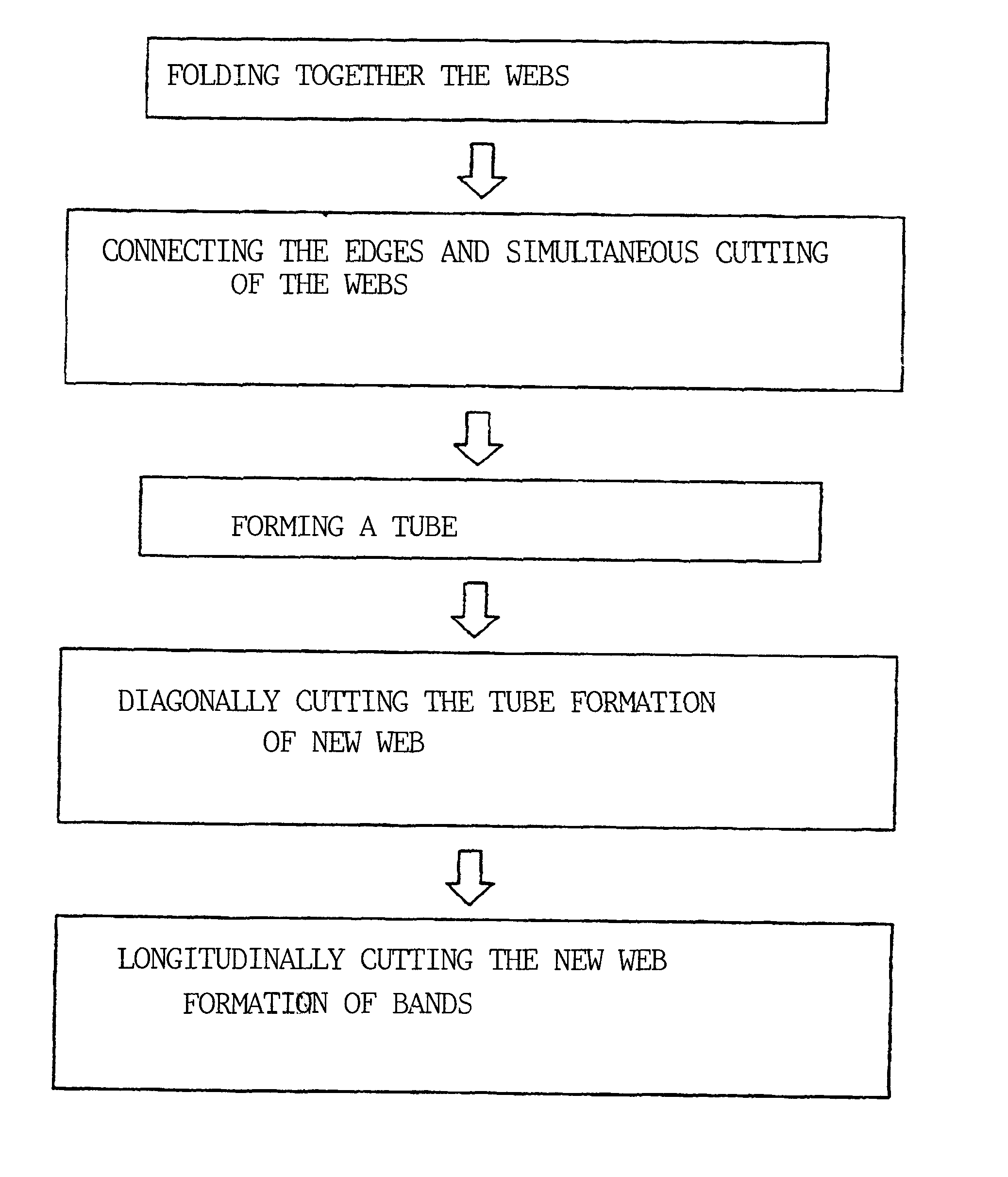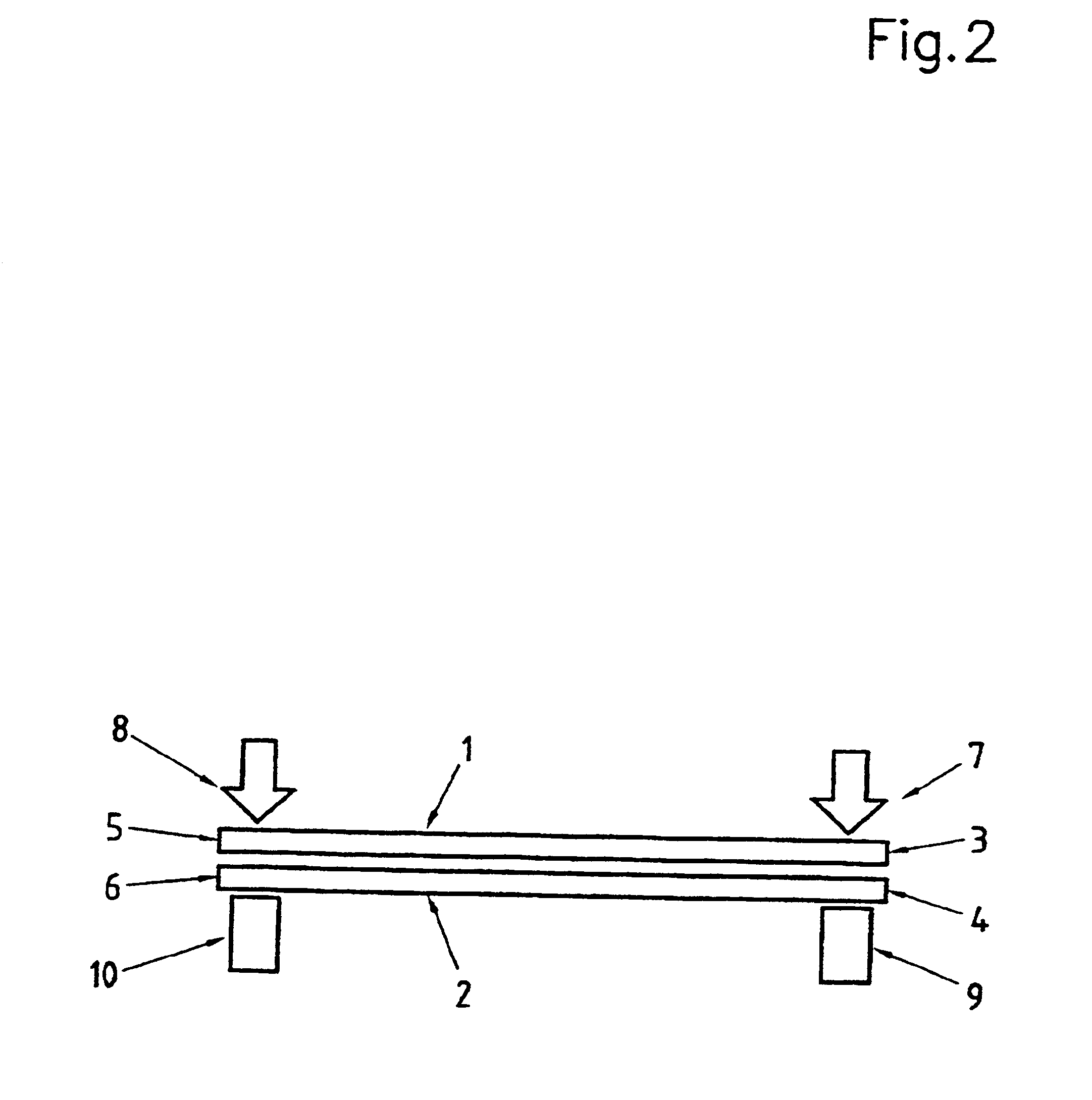Method for producing elastic bands for the clothing industry
a technology for clothing industry and elastic bands, applied in knitting, decorative textile articles, flat warp knitting machines, etc., can solve the problems of many clippings, many unsuitable, and reduced strength in the transverse direction
- Summary
- Abstract
- Description
- Claims
- Application Information
AI Technical Summary
Benefits of technology
Problems solved by technology
Method used
Image
Examples
Embodiment Construction
In FIG. 1 the method is represented schematically, for an exemplary embodiment in which two webs are used. Two original webs are used which are produced by industrial methods known per se. The two webs are laid on top of each other and their open edges are joined to each another by ultrasound, and at the same time, the seam allowances present on both sides of the webs are cut off. In this manner, a tube has been formed which is taken to a further cutting device, where it is cut open slantwise. By the slantwise cutting open, a new fabric web is formed in which the main stretching direction no longer runs along the fabric web but at an angle to the longitudinal alignment of the web. The rolled-up fabric web is cut into individual slices and made up further.
In FIGS. 2 and 3 the two fabric webs 1 and 2 are drawn more coarsely. They lie on top of each other, and are joined to each other at their open edges 3 and 4, or 5 and 6, respectively, by ultrasound, and are cut. The ultrasound devi...
PUM
| Property | Measurement | Unit |
|---|---|---|
| Angle | aaaaa | aaaaa |
| Angle | aaaaa | aaaaa |
| Angle | aaaaa | aaaaa |
Abstract
Description
Claims
Application Information
 Login to View More
Login to View More - R&D
- Intellectual Property
- Life Sciences
- Materials
- Tech Scout
- Unparalleled Data Quality
- Higher Quality Content
- 60% Fewer Hallucinations
Browse by: Latest US Patents, China's latest patents, Technical Efficacy Thesaurus, Application Domain, Technology Topic, Popular Technical Reports.
© 2025 PatSnap. All rights reserved.Legal|Privacy policy|Modern Slavery Act Transparency Statement|Sitemap|About US| Contact US: help@patsnap.com



